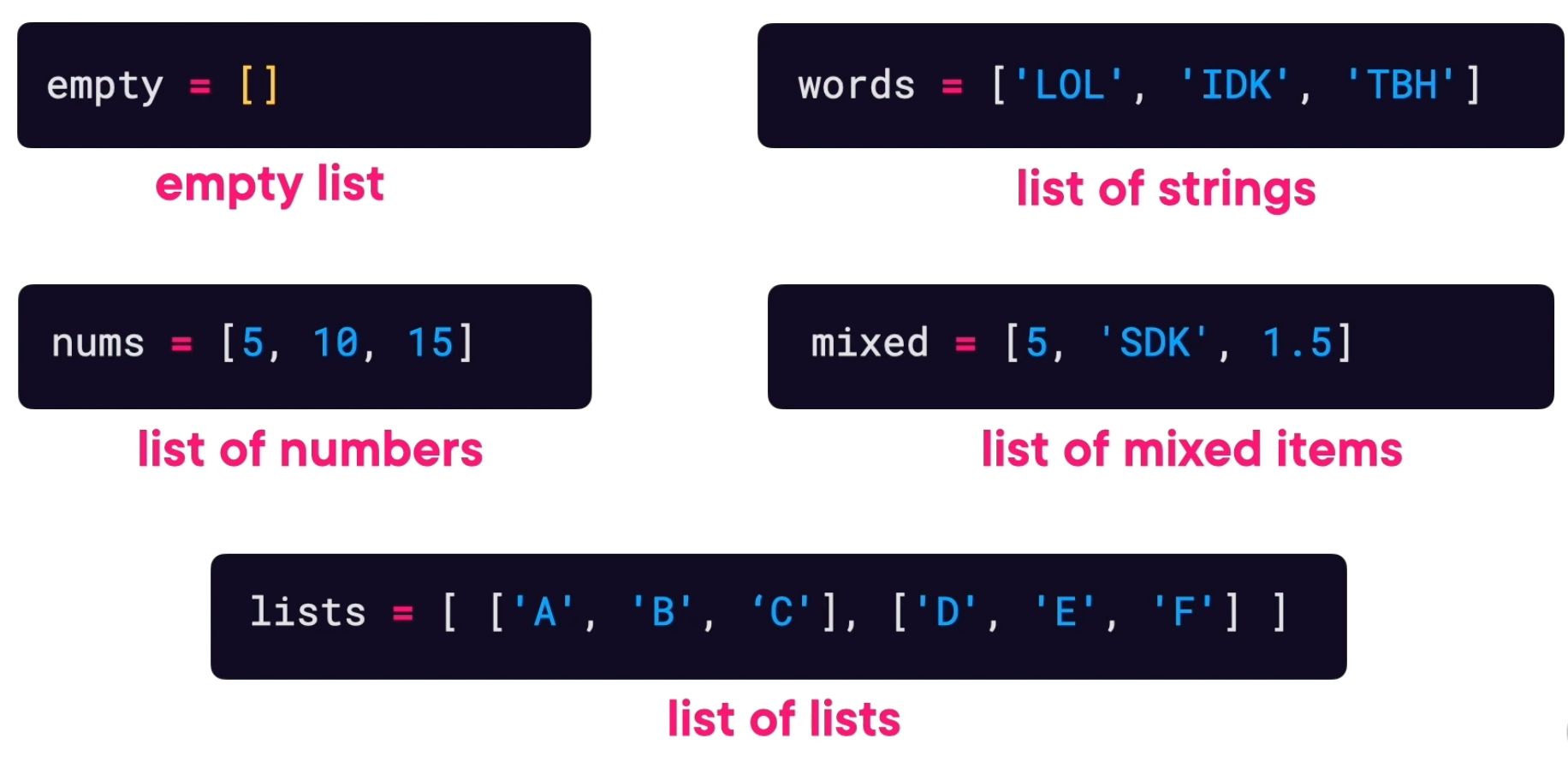This post is a quick summary of the Python language. This is for version 3 and above.

.py or in the interactive shell.python my-script.py in the terminal.print function to print to the console.print function can also take args. example print("You owe", total). This results in You owe 100. It adds space automaticallysep arg. example print("You owe $", total, sep=''). This results in You owe $100end arg. example print("You owe $", total, end=''). This results in You owe $100 without a newline.input to get user input. example name = input("Enter your name: \n")print(f"Hello {name}"):,.2f in the f string. example print(f"Hello {name}, your total is ${total:,.2f}"). This will make it look like a currency.x = 1 will make x an integer.x = 10.50int function. x = int(10.50)float function to convert to float. example x = float(10)x = "Hello World"in keyword. for example: if "e" in "Hello": would evaluate to truex = "Don't". Using single quote with apostrophe will cause an error.+ to concatenate strings. example x = "Hello" + "World". Use space between as necessary.* to repeat a string. example x = "Hello" * 3// to perform a whole integer division. example x = 10 // 3 would yield 3. Whereas x = 10 / 3 would yield 3.33% for the remainder of a division. example x = 10 % 3 would yield 1
if condition1 or condition2: # can also use `and`
print("do something")
elif:
print("do something else")
else:
print("cant do something")not operator to negate a condition. example if not condition:
append method to add to the listlist.remote(item) or del list[index]in to check if an item is in the list. example if item in list:for in loop. example for item in list:sum function to add all elements of a list.range function to generate a list. for example range(0, 10, 2) would result in [0, 2, 4, 6, 8], where 10 is the stop value and 2 is the step/increment value.
del keyword to delete a key/value pair. example del dict[key]get method on dictionary for safe lookup. example dict.get(key, default_value)get method can be chained to get nested values. example dict.get(key1).get(key2)None is returned, this is equivalent to null in JavaScript and evaluates to false in a conditional statement.items method on a dictionary to extract both key and value. example for key, value in dict.items():python -m venv my_venvsource my_venv/bin/activatedeactivatedef keyworddef greet(name):
print("Hello", name)return keywordclass keyword, followed by name and colon. ex: class MyClass:__init__ method is the constructor. ex: def __init__(self, name, age):self is always the first param of the init method. It refers to the current instance of the class. somewhat equivalent to this in JavaScript.class MyClass(ParentClass):super() function to call parent classes methods. example: super().__init__(name, age)new keyword is not required to instantiate a class object. for ex: my_obj = MyClass() is sufficient.import keyword. example: import my_module__init__.py fileimport keyword. example: import my_packagetry, catch and finally blocks to handle exceptionstry:
# do something
except:
# handle exception
finally:
# do somethingraise keyword. ex: - raise Exception("Invalid value")as keyword. ex: except FileNotFoundError as e:open function to open a file. example: file = open("file.txt")close method to close the file. example: file.close()with keyword to open a file. example: with open("file.txt") as file: This will ensure the file is closed automatically.read method can be used to read the contents of the file. example: file.read()readlines method can be used to read the contents of the file as a list. example: file.readlines() This will return a list of lines in the file that can be looped over using the for-in loop.for line in file:w. example: file = open("file.txt", "w"). This will overwrite the contents of the file, so be careful. use param 'a' to append to the file instead.write method on the file to write to the file. example: file.write("Hello")
os python module provides methods to work with the operating system and file system. example: os.remove("file.txt") will delete the file. Threat Modelling - Using Microsoft STRIDE Model
Threat Modelling - Using Microsoft STRIDE Model
 Refactor react code to use state store instead of multiple useState hooks
Refactor react code to use state store instead of multiple useState hooks